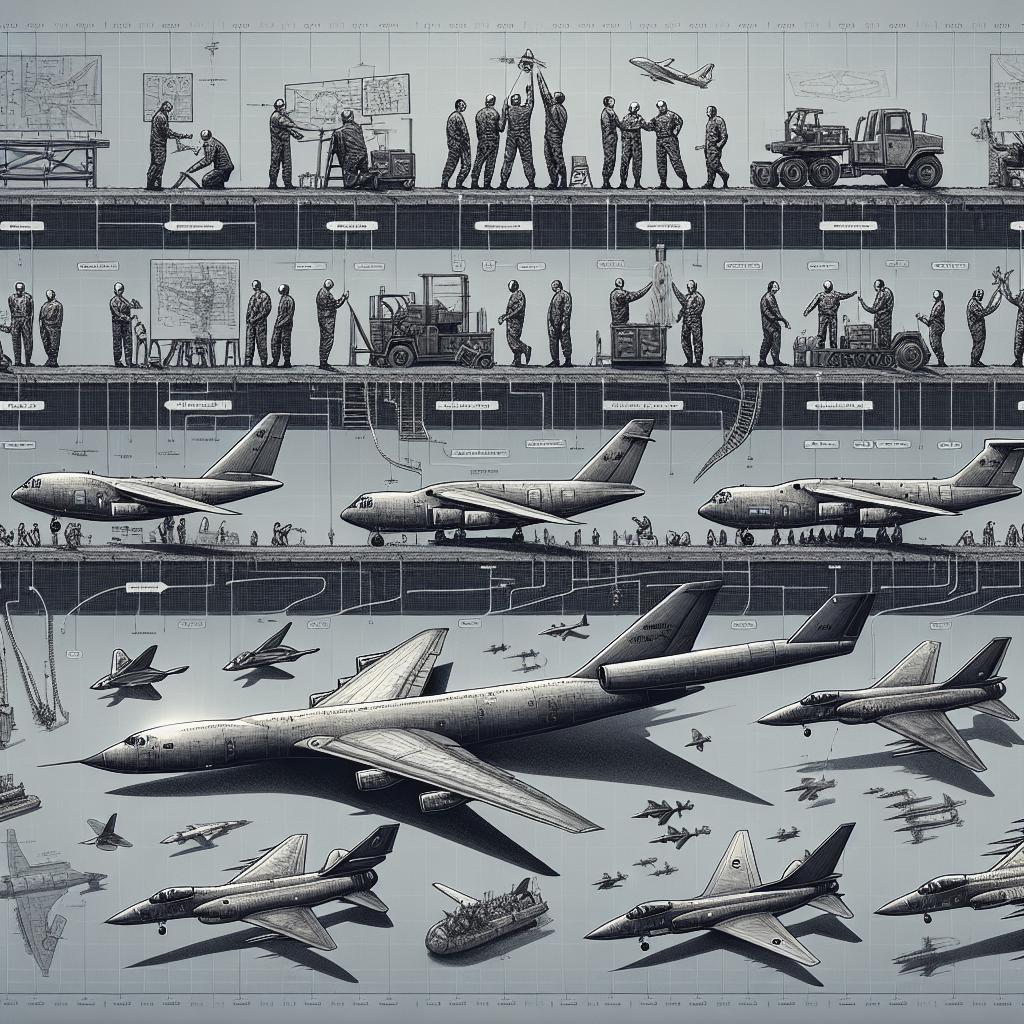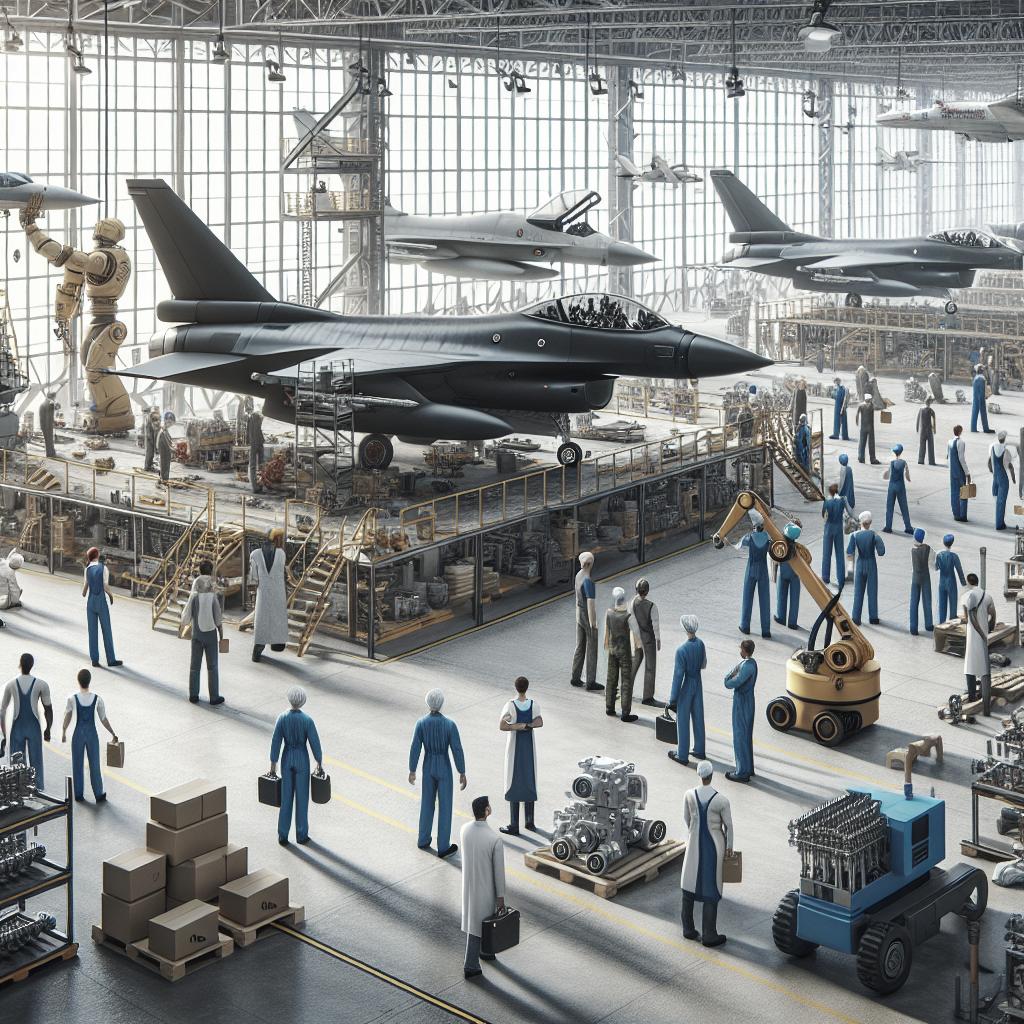“`html
The longevity of military aircraft is influenced by a variety of factors, encompassing measurement, monitoring, modeling, maintenance, and modernization. Each stage plays a pivotal role in ensuring the operational readiness and efficacy of these sophisticated machines. In this article, we delve into the intricacies of these factors, examining how they’re managed and their impact on the overall lifespan of the aircraft. From initial creation to the latest upgrades, this comprehensive guide provides insight into the lifecycle of military aircraft. By understanding these elements, we can appreciate the complexities and the advanced engineering that keep these aircraft in the sky.
Measurement
Measurement is critical in assessing the longevity and performance of military aircraft. Engineers rely on precise measurements of stress, strain, and fatigue to ensure that the aircraft can withstand the rigors of various missions. These measurements often start from the design phase and continue through regular inspections during the aircraft’s operational life.
Advanced sensors and diagnostic tools play a crucial role in measurement. Strain gauges, accelerometers, and ultrasonics are commonly employed to gather data on the aircraft’s structural health. This data helps engineers understand the physical forces acting on the aircraft and predict future performance, thereby contributing to better lifecycle management.
Monitoring
Once in service, military aircraft are subject to continuous monitoring to track their health and performance. Flight data recorders and health management systems gather real-time data to detect anomalies and prevent potential failures. Monitoring ensures that any arising issues can be quickly identified and rectified before they pose a threat.
In addition to hardware-based monitoring, software solutions have become increasingly sophisticated. Predictive analytics and machine learning algorithms analyze data to forecast potential problems, allowing ground crews to be proactive rather than reactive. This proactive approach significantly extends the operational lifespan of the aircraft.
Modeling
Modeling serves as a predictive tool that simulates the aircraft’s performance under various conditions. By creating detailed computational models, engineers can assess different scenarios and their effects on the aircraft. These models can predict wear and tear, identify potential weak points, and optimize maintenance schedules.
Finite Element Analysis (FEA) and Computational Fluid Dynamics (CFD) are popular modeling techniques used in the aerospace industry. These methods offer insights into the airflow, material stresses, and thermal conditions the aircraft will encounter, thereby enhancing both the design and maintenance strategies implemented during its lifespan.
Maintenance
Regular and timely maintenance is fundamental to prolonging the lifespan of military aircraft. Scheduled maintenance, including inspections, repairs, and part replacements, ensures that the aircraft remains in top operational condition. Maintenance activities are often guided by stringent protocols and extensive checklists.
Additionally, unscheduled maintenance activities are critical to addressing unforeseen issues. Ground crews must be highly skilled and equipped with the best tools to perform repairs quickly and efficiently. The importance of maintenance cannot be overstated, as it directly influences the readiness and safety of the aircraft.
Modernization
Modernization involves upgrading the existing systems and technologies of military aircraft to meet current operational requirements. These updates can include advanced avionics, improved weaponry, and enhanced communication systems. Modernization helps in extending the useful life of older aircraft, making them compatible with modern mission demands.
Beyond technological upgrades, modernization can also involve structural enhancements. Retrofitting aircraft with new materials or redesigned components can address issues related to aging and stress. This comprehensive approach ensures that older aircraft remain viable and effective, often for decades beyond their original expected lifespan.
DETAIL
The detailed intricacies of managing the lifespan of military aircraft emphasize the importance of a multidisciplinary approach. Engineers, maintenance crews, data analysts, and designers work in tandem to ensure that these complex machines remain operationally effective and safe. Continuous innovation and adherence to rigorous standards are key to achieving this goal.
ABOUT THE AUTHORS
Lucas Martin is a journalism and communications graduate specializing in technology and innovation. With a passion for dynamic and engaging writing, Lucas aims to keep readers informed about the latest trends and advancements in various fields. Through rigorous research and a commitment to quality content, Lucas strives to provide valuable insights to his audience.
Summary of Main Points
| Aspect | Details |
|---|---|
| Measurement | Involves precise measurements of stress, strain, and fatigue using advanced sensors and diagnostic tools. |
| Monitoring | Continuous real-time data collection through flight data recorders and health management systems. |
| Modeling | Predictive tools like Finite Element Analysis (FEA) and Computational Fluid Dynamics (CFD) for assessing performance and optimizing maintenance schedules. |
| Maintenance | Regular scheduled and unscheduled maintenance activities guided by stringent protocols and checklists. |
| Modernization | Upgrades to systems, technology, and structural components to extend the operational life of older aircraft. |
“`


